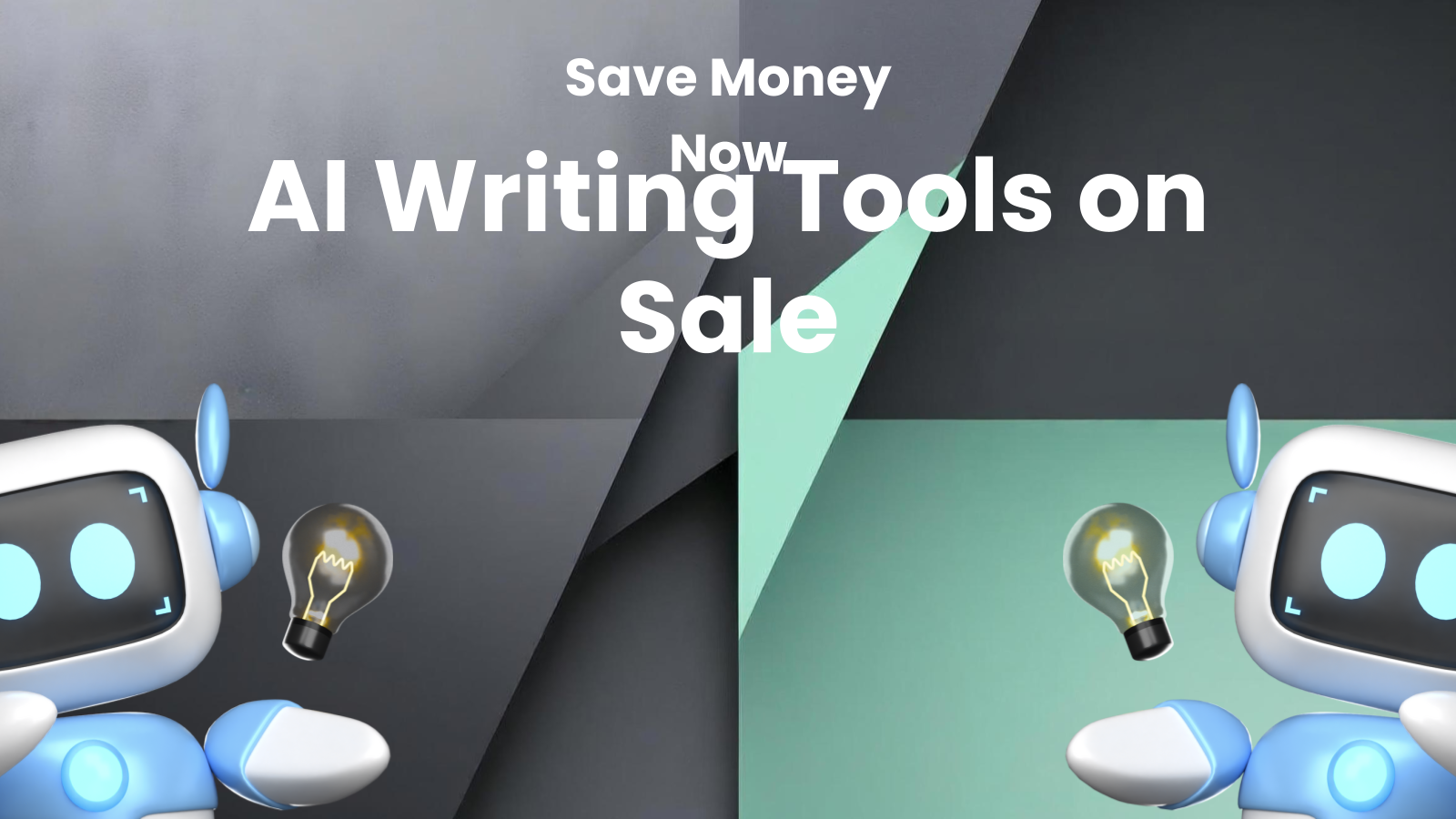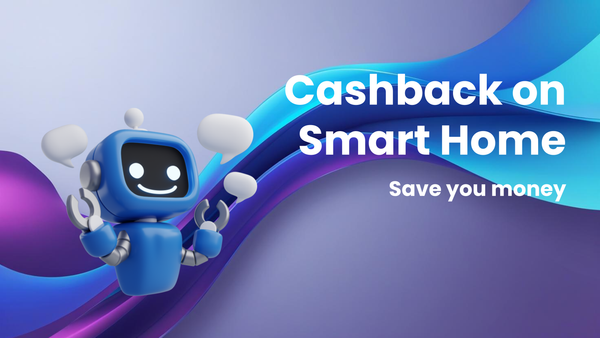How to Save Money on AI Writing Tools with Price Tracking

How to Save Money on AI Writing Tools with Price Tracking
Have you ever signed up for an AI writing tool, only to see a better deal advertised just a week later? It's a frustrating experience that many users of these powerful platforms face. As AI writing tools become increasingly essential for content creators, marketers, and businesses, understanding how to navigate their complex pricing structures and leverage price tracking strategies is crucial. This article delves into the world of AI writing tool pricing, revealing hidden costs, comparing different models, and, most importantly, providing actionable strategies to save you money through effective price tracking. This guide provides valuable information, ultimately empowering you to make informed decisions and optimize your investment in AI writing technology.
Understanding the AI Writing Tool Landscape
AI writing tools have exploded in popularity, offering solutions for everything from generating blog posts and marketing copy to automating email campaigns and even crafting creative fiction. These tools utilize advanced natural language processing (NLP) and machine learning (ML) models to understand and generate human-quality text. This ability to automate content creation has made them invaluable for businesses of all sizes looking to scale their content output and improve efficiency.
The rise of AI writing tools can be traced back to advancements in deep learning and the availability of massive datasets for training these models. Early tools were limited in their capabilities, often producing repetitive or nonsensical text. However, with the introduction of models like GPT-3 and its successors, the quality of AI-generated content has dramatically improved, making it difficult to distinguish from human-written text in many cases.
Why does this matter to you? AI writing tools are no longer a novelty; they are becoming an integral part of the content creation process. By understanding the landscape, you can better assess your needs and choose the right tool for your specific requirements.
Decoding the Pricing Jungle: Models and Metrics
The pricing of AI writing tools can be confusing, varying significantly across providers and plans. Understanding the different pricing models and metrics used is essential for making informed decisions and avoiding unexpected costs. The main models include:
- Subscription-based: A recurring fee (monthly or annually) provides access to the tool and a specific quota of features, words, or projects. This is the most common pricing model.
- Pay-as-you-go: You pay only for what you use, typically based on the number of words generated or the number of requests made to the AI engine. This model is suitable for users with fluctuating content needs.
- Tiered pricing: Different subscription tiers offer varying levels of access, features, and usage limits. As you upgrade to higher tiers, you unlock more capabilities and increase your monthly quota.
- Credit-based: You purchase credits that can be used to generate content or access specific features. Each task consumes a certain number of credits, depending on its complexity.
Common metrics used to determine pricing include:
- Word count: The number of words generated by the AI. This is a standard metric for text-based content.
- Character count: Similar to word count, but measures the number of characters used. Relevant for platforms like Twitter with character limits.
- Number of users: The number of team members who can access and use the tool. Important for businesses with multiple content creators.
- Number of projects: The number of individual content projects you can create and manage within the tool.
- Features: Access to certain features, such as SEO optimization tools, plagiarism checkers, or advanced content templates, may be restricted to higher-priced plans.
Example: A small business might choose a tiered subscription plan that allows for 5 users and 50,000 words per month, while a freelancer might prefer a pay-as-you-go option to manage costs more precisely.
The Hidden Costs: Beyond the Headline Price
While the advertised price of an AI writing tool may seem appealing, it's crucial to be aware of potential hidden costs that can significantly impact your overall expenses. These hidden costs can include:
- Overuse fees: Exceeding your monthly quota of words, characters, or credits can trigger significant overuse fees, often at a higher rate than the standard cost per unit.
- Feature add-ons: Access to certain advanced features, such as plagiarism checking, SEO analysis, or custom templates, may require additional payments beyond the basic subscription price.
- Training costs: Some AI writing tools require training or customization to align with your brand voice and style. This training may involve additional fees for consulting or setup.
- Integration costs: Integrating the AI writing tool with your existing marketing or content management systems may incur additional development or integration costs.
- Data storage fees: Storing large amounts of AI-generated content within the platform may lead to additional data storage fees, especially for tools that offer version control and collaboration features.
- Limited AI generations: Often these tools limit the number of AI generations, and that may cause you to buy more to reach your desired output.
- Quality output depending on tiers: Some subscriptions lock up AI generation quality and only allow better quality in the more expensive tiers.
Real-world example: A marketing agency signed up for a seemingly affordable AI writing tool subscription. However, they underestimated their content needs and quickly exceeded their monthly word quota. The resulting overuse fees doubled their initial budget, forcing them to reevaluate their strategy.
The Pitfalls of Commitment: Why Locking in Can Backfire
Many AI writing tool providers offer discounts for long-term commitments, such as annual subscriptions. While these discounts may seem attractive, locking yourself into a long-term contract can backfire if your needs change or if a better alternative emerges.
- Evolving Needs: Your content requirements may shift over time. The features you initially valued may become less important, while new needs arise that the tool doesn't address.
- Market Innovation: The AI writing tool market is rapidly evolving, with new and improved tools constantly emerging. Locking yourself into a long-term contract prevents you from taking advantage of these innovations.
- Unsatisfactory Performance: The tool may not perform as expected, or its output quality may decline over time. You may be stuck with a tool that doesn't meet your needs without recourse.
- Lack of Flexibility: Long-term contracts often lack flexibility, making it difficult to adjust your plan based on fluctuating usage or budget constraints.
- No Price Drop Opportunities: Locking in may not allow you to find other opportunities for better deals with price drops.
Case study: A blogger signed up for a two-year subscription to an AI writing tool based on a promotional offer. After a few months, a competitor released a tool with superior features and better output quality. However, the blogger was stuck with their existing contract and couldn't switch without incurring substantial penalties.
Price Tracking to the Rescue: Your Secret Weapon
Price tracking involves monitoring the prices of AI writing tools over time to identify trends, discounts, and opportunities for savings. By actively tracking prices, you can make informed decisions about when to buy, which plan to choose, and how to negotiate better deals.
The benefits of price tracking include:
- Identifying Discounts and Promotions: AI writing tool providers frequently offer discounts, promotional pricing, and limited-time offers. Price tracking helps you identify these opportunities and take advantage of them.
- Understanding Pricing Trends: Monitoring prices over time reveals patterns and trends, allowing you to predict future price fluctuations and make strategic purchasing decisions.
- Comparing Pricing Models: Price tracking allows you to compare the pricing of different AI writing tools and plans, taking into account all hidden costs and features.
- Negotiating Better Deals: Armed with price data, you can negotiate better deals with AI writing tool providers, leveraging your knowledge of market prices and competitor offerings.
- Avoiding Overspending: Price tracking helps you stay within your budget by ensuring that you're paying a fair price for the features and usage you require.
Practical Example: Let's say you're interested in two AI writing tools, Tool A and Tool B. You start tracking their prices over a period of three months. You notice that Tool A consistently offers discounts during the holiday season, while Tool B rarely offers any promotions. Based on this information, you decide to wait until the holiday season to purchase Tool A and potentially explore Tool B if it offers a promotional sale.
How to Track Prices Like a Pro: Tools and Strategies
Several tools and strategies can help you effectively track the prices of AI writing tools:
- Dedicated Price Tracking Websites: Websites and browser extensions like Keepa, Honey, or CamelCamelCamel (originally designed for e-commerce) can be adapted to track pricing pages of AI writing tools. You can set up alerts to notify you when prices drop below a certain threshold.
- Spreadsheet Tracking: Create a spreadsheet to manually track the prices of different AI writing tools and plans. Update the spreadsheet regularly with the latest prices and promotions.
- Google Alerts: Set up Google Alerts for specific keywords related to AI writing tool discounts and promotions (e.g., "AI writing tool discount," "AI content generator promo code").
- Social Media Monitoring: Follow AI writing tool providers on social media platforms like Twitter, Facebook, and LinkedIn. Many providers announce discounts and promotions on their social media channels.
- Email Subscriptions: Subscribe to the email newsletters of AI writing tool providers. Newsletters often contain exclusive discounts and promotions for subscribers.
- Competitor Analysis: Monitor the pricing of competitor AI writing tools. Providers often offer competitive discounts to attract customers from their rivals.
Actionable Tip: Start with a spreadsheet to identify your target tools and plans. Then, use a combination of Google Alerts, social media monitoring, and email subscriptions to stay informed about price changes and promotions.
Negotiating Like a Pro: Turning Data into Deals
Price tracking provides valuable data that you can use to negotiate better deals with AI writing tool providers. Here's how to leverage your data effectively:
- Highlight Competitor Pricing: Show the provider that you're aware of competitor pricing and are considering alternative options. Mentioning a competitor's lower price can often prompt the provider to offer a discount.
- Demonstrate Your Value: If you're a high-volume user or have a large team, emphasize the value you bring to the provider. They may be willing to offer a discount in exchange for your business.
- Inquire About Custom Plans: If the standard plans don't meet your needs, inquire about custom plans. Providers may be willing to tailor a plan to your specific requirements at a discounted price.
- Leverage Promotional Offers: Point out any current promotional offers or discounts that you're aware of. Ask the provider if they can match or beat the offer.
- Ask for a Trial Extension: If you're unsure about committing to a long-term contract, ask for an extended trial period. This allows you to thoroughly evaluate the tool before making a decision.
Real-life Negotiation: A content manager used price tracking data to discover that a competitor was offering a similar AI writing tool at a 15% lower price. They contacted their current provider and presented the competitor's offer. The provider, eager to retain their business, matched the competitor's price and threw in a free feature add-on.
The Future of AI Writing Tool Pricing: What to Expect
The AI writing tool market is constantly evolving, and pricing models are likely to become more sophisticated and personalized in the future. Here's what you can expect:
- AI-Powered Pricing: AI algorithms will analyze user behavior and usage patterns to determine personalized pricing. Users who generate high-quality content or utilize advanced features may be offered discounts or preferential pricing.
- Dynamic Pricing: Prices may fluctuate in real-time based on supply and demand. During peak usage periods, prices may increase, while during off-peak periods, prices may decrease.
- Feature-Based Pricing: Users will pay only for the specific features they need, rather than being forced to purchase bundled plans with features they don't use.
- Outcome-Based Pricing: Pricing may be tied to the outcomes achieved by the AI writing tool, such as increased website traffic, improved conversion rates, or higher engagement metrics.
- Bundled Services: AI writing tools may be bundled with other marketing or content creation tools, creating comprehensive solutions with attractive pricing.
Expert Opinion: "The future of AI writing tool pricing will be driven by personalization and value-based models," says Sarah Jones, a leading AI marketing consultant. "Users will expect to pay only for the features and outcomes that directly benefit their business."
Key Takeaways: Your Action Plan for Savings
- Understand the pricing models: Differentiate between subscription, pay-as-you-go, tiered, and credit-based options.
- Identify hidden costs: Be aware of potential overuse fees, feature add-ons, and integration costs.
- Avoid long-term commitments: Resist the temptation to lock in without carefully evaluating your needs.
- Track prices diligently: Use dedicated websites, spreadsheets, and alerts to monitor price changes.
- Negotiate strategically: Leverage price data and competitor offers to negotiate better deals.
- Stay informed: Keep up with the latest trends and pricing models in the AI writing tool market.
By following these steps, you can save money on AI writing tools and maximize your return on investment.
Conclusion: Embrace Savvy Investing
The world of AI writing tools offers tremendous opportunities for content creators and businesses. However, navigating the complex pricing landscape and avoiding unnecessary costs is crucial. By implementing the price tracking strategies outlined in this article, you can become a savvy investor in AI writing technology, ensuring that you're getting the best value for your money. The most important thing is to understand AI technology, keep up to date, and continue learning to be the most successful.
As you continue your exploration of AI writing tools, consider the long-term value they can bring to your content creation process. The initial price is only one factor; focus on the quality, efficiency, and overall impact on your business. Now, take action: identify three AI writing tools that align with your needs and begin tracking their prices. The insights you gain will empower you to make informed decisions and unlock significant savings.




